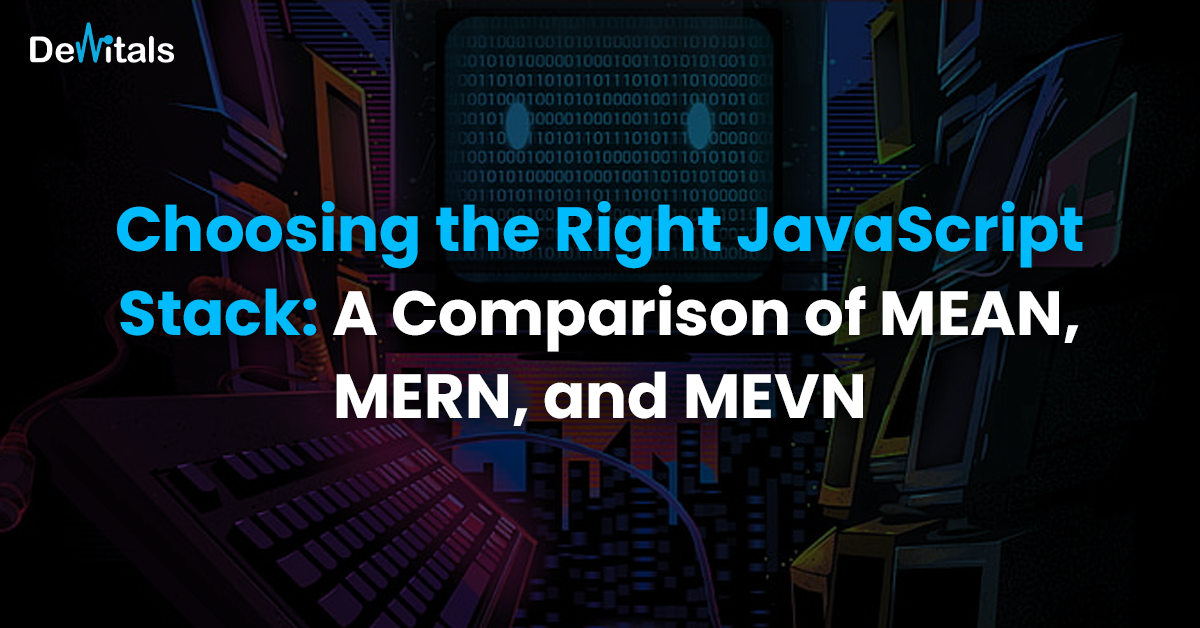Introduction: In today’s web development landscape, JavaScript has emerged as a dominant language for building robust and scalable applications. Within the JavaScript ecosystem, three popular stacks have gained significant attention: MEAN, MERN, and MEVN. These stacks combine different frameworks and tools to provide a comprehensive solution for full-stack development. In this blog post, we will explore and compare these stacks to help you make an informed decision when choosing the right JavaScript stack for your next project.
- MEAN Stack: The MEAN stack stands for MongoDB, Express.js, Angular, and Node.js. This stack leverages MongoDB, a NoSQL database, for storing data, Express.js as the web application framework, Angular for building dynamic frontend interfaces, and Node.js as the server-side runtime environment. We will delve into the strengths and considerations of each component and discuss the overall benefits and challenges of adopting the MEAN stack.
- MERN Stack: The MERN stack comprises MongoDB, Express.js, React, and Node.js. Like MEAN, MERN uses MongoDB for data storage, Express.js for server-side development, and Node.js for the runtime environment. However, instead of Angular, MERN employs React, a popular JavaScript library for building user interfaces. We will explore the advantages of React and how it integrates with the other components to create a powerful full-stack solution. Additionally, we will discuss the potential drawbacks and considerations when using the MERN stack.
- MEVN Stack: The MEVN stack is similar to the MERN stack but replaces Angular with Vue.js as the frontend framework. By utilizing MongoDB, Express.js, Vue.js, and Node.js, MEVN offers an alternative choice for developers looking for a JavaScript stack with Vue.js at its core. We will delve into the benefits of Vue.js and examine how it complements the other components in the MEVN stack. Furthermore, we will address any potential challenges and compare MEVN with MEAN and MERN.
- Choosing the Right Stack: While all three stacks provide a solid foundation for full-stack JavaScript development, each has its own strengths, weaknesses, and suitability for different types of projects. We will discuss various factors to consider when choosing between MEAN, MERN, and MEVN stacks, including the learning curve, community support, performance considerations, and project requirements. By evaluating these factors, you can make an informed decision that aligns with your project goals and development team’s expertise.
- Real-World Use Cases and Examples: To solidify the concepts discussed, we will showcase real-world examples and use cases where each stack excels. These examples will help you understand the practical applications of MEAN, MERN, and MEVN and provide insights into how these stacks perform in different scenarios.
Conclusion: In conclusion, the MEAN, MERN, and MEVN stacks have gained popularity within the JavaScript community for building powerful full-stack applications. By comparing and evaluating the components and considerations of each stack, you can choose the most suitable stack based on your project requirements, team expertise, and long-term goals. Whether you prefer Angular, React, or Vue.js, these stacks offer flexible solutions to build scalable and modern web applications.


